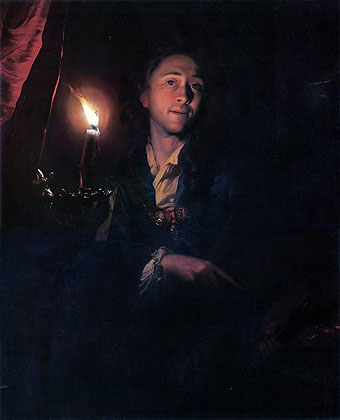
Self Portrait by Candlelight (1695).
One additional pleasure of Le Fanu’s story and Leslie Megahey’s film is the way they draw attention to the work of an artist who might otherwise have remained overshadowed by his more famous contemporaries. Ever since seeing the meticulous chiaroscuro of Joseph Wright’s An Experiment on a Bird in an Air Pump (1768) I’ve been fascinated by paintings which feature a single artificial light source. Candlelit pictures are a particular fascination since these aren’t easy to paint even today when you can photograph the required scene beforehand. How much more difficult would it be painting a candlelit scene by candlelight alone? Works of this nature demonstrate an artist’s fascination with limited sources of light but also serve as displays of expertise, as did so much Dutch painting of Schalcken’s time with its emphasis on photo-realist representation.
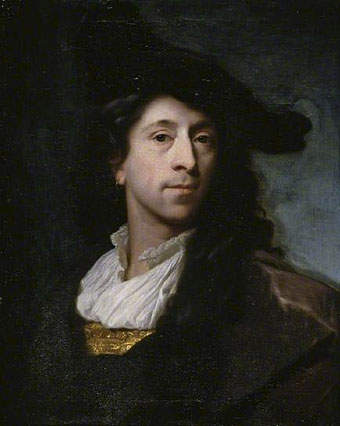
Self Portrait (no date).
This small selection of paintings by Godfried Schalcken (1643–1706) shows some of the pictures that appear in Megahey’s film, or which we see being posed or replicated. At the end I’ve included Schalcken’s own take on the Salomé story which means his work can now be ushered into the Salomé archive. More of Schalcken’s work may be seen at Wikimedia Commons and the BBC’s Your Paintings site. One significant picture is unavailable: the painting which Le Fanu describes at the opening of his story. In his interview about the making of the film Megahey says that they searched the entire catalogue of Schalcken paintings but were unable to find a single picture that matches the one described in Le Fanu’s story. The painting seen in the film (which is perfectly rendered in Schalcken’s style) was created especially for the production.
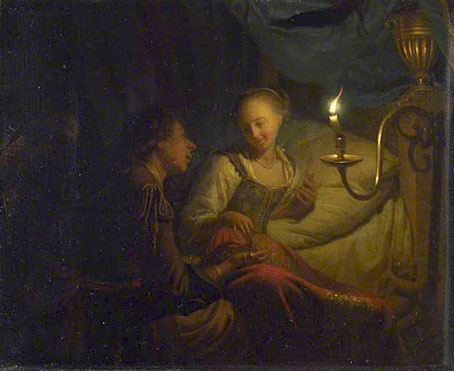
A Candlelight Scene: A Man offering a Gold Chain and Coins to a Girl seated on a Bed (c. 1665–70).
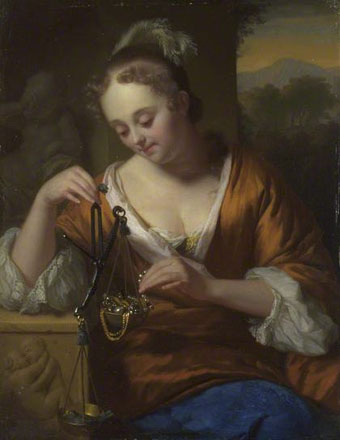
Allegory of Virtue and Riches (c. 1667).
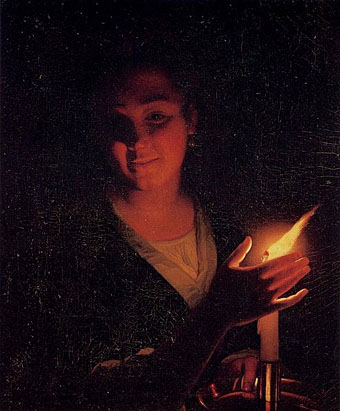
Young Girl with a Candle (c. 1670–75).
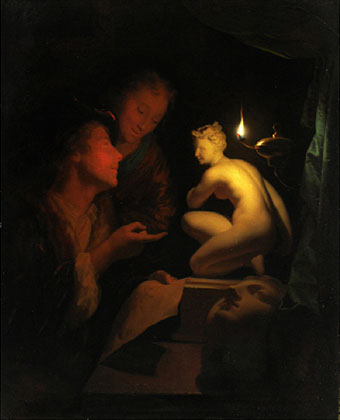
Artist and Model Looking at an Ancient Statue by Lamplight (c. 1675–1680).
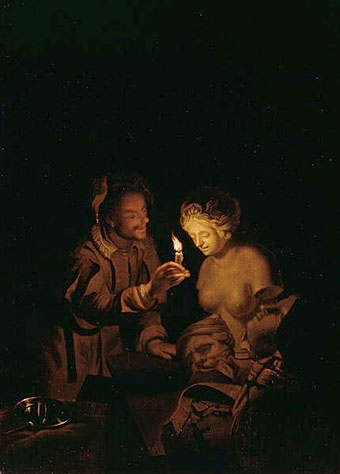
Pygmalion (no date).
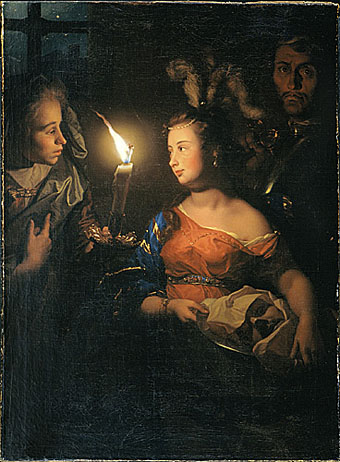
Salomé with the Head of John the Baptist (c. 1700).
Elsewhere on { feuilleton }
• The Salomé archive
Previously on { feuilleton }
• Schalcken the Painter revisited
• Schalcken the Painter
• Leslie Megahey’s Bluebeard
• The Watcher and Other Weird Stories by J. Sheridan Le Fanu
• Chiaroscuro

John, can you explain to me why Leslie Magahey produced relatively few works? His plays were among the most thrilling I saw on TV, and his Duke Bluebeard’s Castle is the best production of the opera known to me, cutting straight to the heart of the music in a way that so rarely happens. Was this a case of a talent under-appreciated by those who were handing out the jobs, or was Megahey simply a man who committed to a very few, though beautifully executed projects.
I occasionally play that game with myself, the one where you have to choose which people, living or dead, you’d like to share an evening of food and conversation with. The game more usually consists of a list, though I never get beyond my first choice, Leslie Megahey. I’d like to ask him ‘Why not more? What have you been doing?’, on the grounds that the answers would be bound to be fascinating.
Well, as is so often the way with these things, after writing my first comment I started looking for Megahey on the web, and I see that he’s been very busy indeed, though largely as a producer.
But I’d still like to know why there have been relatively few dramas that he’s helmed as director. He has such skills for the work.
I’d love to see that Orson Welles documentary, though it looks hard to find.
Yes, he was very busy as a producer as well as occasional director. Sometimes the two overlap as was often the case in television.
I imagine changes in production culture affected his position as much as everyone else at the BBC when the business-driven Birt brigade took charge and drove out many of those who made so much memorable programming in the 70s and 80s. He says himself on the Schalcken extra that the story’s absence of any redemptive qualities would be anathema to Hollywood. I’ve mentioned before the way his feature film, The Hour of the Pig, was disgracefully retitled and chopped around by US distributors then left for dead. I’m just happy he managed to do what he did–that Orson Welles interview was a real coup–and that some of these things are being recognised at last.
Ah, that bloody insistence by the dull-witted that there must be redemption. The syrup that always has to be ladled over the tart in order to render it inedible for adults! Hrumphhhhhh!